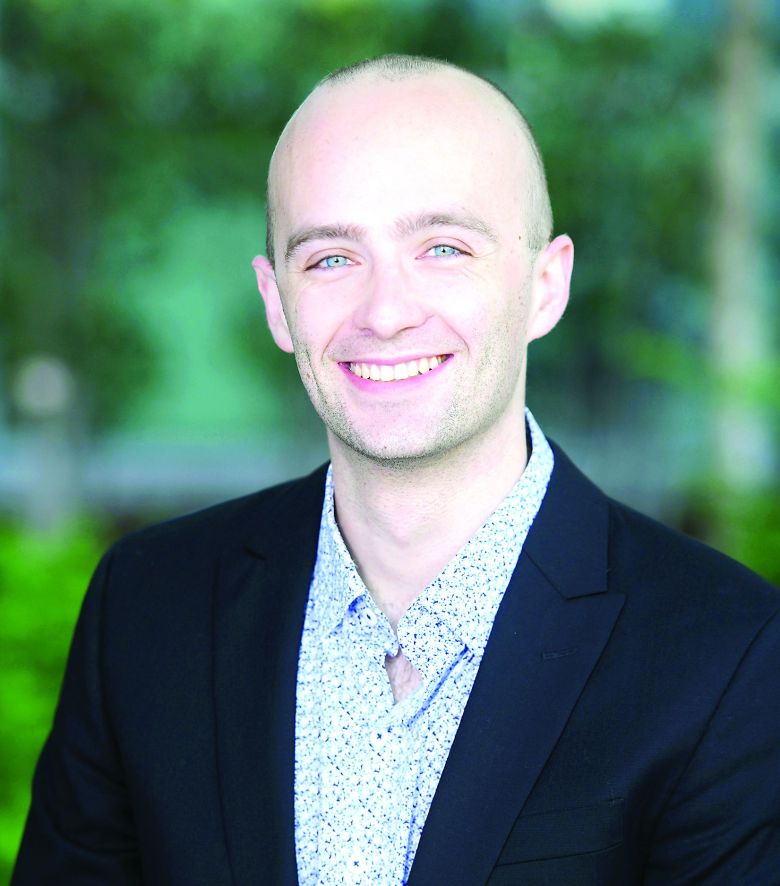Fifteen years ago, my father walked 1,000 miles in 1,000 hours.
Despite worsening pain from blisters and muscle tears, he trekked day and night through Highlands Ranch parks to raise money for research on blinding diseases. And he did it all when he had lost the last parts of his own vision only a few months before.
While his ability to turn adversity into action continues to be a source of inspiration for me, something else impacted me just as profoundly: the support he received from the community. People from Highlands Ranch, Denver and beyond contributed their time to his journey and money to his fundraiser solely because they believed he was doing something worthwhile — that vision research mattered.
The idea that I could discover something new, that I could find or develop something that would help people, has always burned at the center of my love of science and technology. That spark found direction in my first biology course at Littleton High School; the incredible complexities of the natural world amazed me, and I knew it was my path to develop or discover something that would help my father and those like him. This growing fire eventually led me to pursue a Ph.D. at the University of Southern California where I studied changes in gene expression within developing photoreceptors — the light sensing cells in the eye. Unfortunately, for many people passionate about the sciences, chasing those dreams has recently become much harder.
The National Institutes of Health (NIH) and the National Science Foundation (NSF) are integral to all aspects of American research: from providing central and accessible databases to share work to funding research from scientists of all disciplines. Tax dollars spent through these agencies not only support critical research efforts but also pay back in spades; it’s estimated for every $1 spent by the NIH, $2.56 of economic activity is generated. In Colorado alone, it’s estimated that NIH support amounts to $567 million dollars which provides 6,971 jobs and stimulates $1.59 billion in economic activity.
The current administration has drastically undermined these critical engines of American research by rescinding or freezing previously awarded grants, purging expert personnel and slowing evaluations of research proposals or renewals. Limits are being placed on the portions of grant funds that help maintain university facilities and pay the staff that enable their laboratories to function. Federal grants are highly competitive but right now even having a grant reviewed is unlikely and researchers can’t count that what they have earned will be available to keep their laboratory going.
The loss of these funding sources has also massively harmed our next generation of scientists. Prospective graduate students, like I was not long ago, have had their acceptances revoked as some universities are now unable to financially support pre-doctoral candidates. Without this federal funding, I may not have had the opportunity to train and study the visual system to help people like my father.
I realize that to many, science and scientists are distant ideas, and running a research group is a hard and often thankless task. However, government-funded research provides us with education, advancements in medicine and stimulates the economy. It helped a young boy from Highlands Ranch to become the first in his family to graduate with a Ph.D. and chase a dream of healing blindness. Please take the time to remind your friends and neighbors of the amazing good that has come from American scientific institutions. Contact your representatives about protecting scientific freedom and funding. I believe our community supports curiosity, knowledge and learning, and that 15 years on, the walk still matters.
This guest column was written by Dominic Shayler, a postdoctoral fellow at the University of Colorado Anschutz who lives in Aurora with his wife and daughter. The opinions expressed in this column are the author‘s and do not represent the position of the University of Colorado Anschutz Medical Campus.


